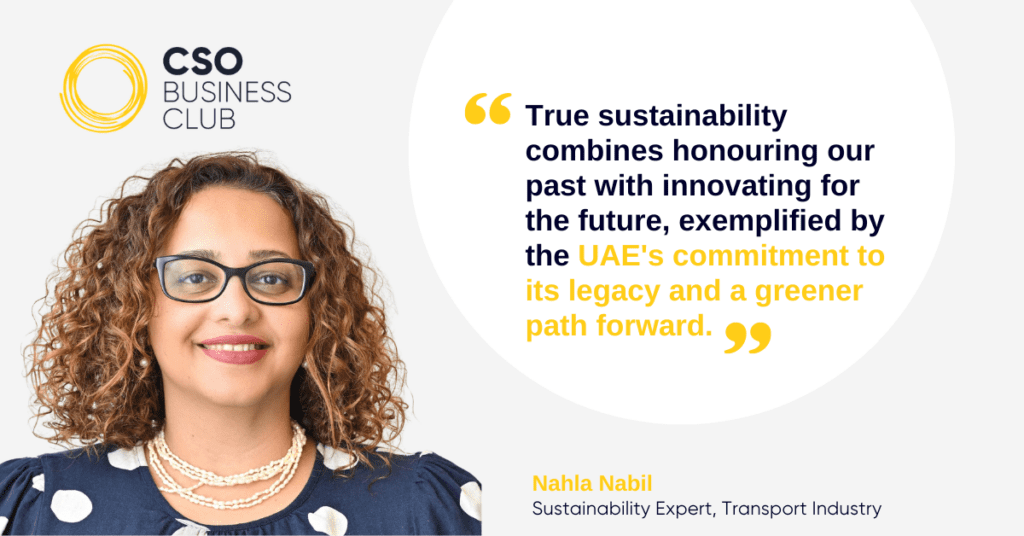Desert Wisdom: How the UAE’s Heritage Shapes Its Green Future

Sustainability is rapidly gaining momentum, drawing the attention of many who understand the urgent environmental and climate change challenges ahead. However, it is prudent to recognize places where sustainability has always been a way of life.
In this article, I will explore how the UAE’s rich heritage of sustainability has shaped its leading role in global sustainability, through pillars that were once and continue to be part of the heritage.
The Emirati Approach to Sustainability
When sustainability was not even a widely recognized term, Sheikh Zayed bin Sultan Al Nahyan, the founding father of the UAE, was an early torchbearer. His commitment to environmental conservation and integrating traditional practices in the nation’s development has been instrumental in positioning the UAE as a forerunner in sustainability.
Pillars of Emirati Environmental Conservation
The Falaj irrigation system: This ancient marvel with its roots over 3,000 years deep, allowed communities like Al Ain to thrive. It provided vital access by utilizing underground tunnels to transport water over considerable distances from subterranean sources to communal basins.
Date palm cultivation: Date palms are more than just a dietary staple in the UAE. These majestic trees symbolize resilience, as they are adapted to the desert climate, provide shade, and create a favourable microclimate for cultivating other crops. Date palms have been cultivated for thousands of years and have many uses in traditional crafts and medicines making them a cornerstone of Emirati culture.
Bedouin traditions: The Bedouin culture, with its nomadic lifestyle and intimate knowledge of the desert, is a pillar of sustainability in the UAE. The Bedouins mastered water conservation, efficient resource use, and maintained a deep respect for nature. These practices, rooted in generations of wisdom, have been integral in shaping the UAE’s sustainable ethos. Bedouin traditions encompass responsible herding practices, meticulous seed preservation, utilization of medicinal plants for natural remedies, and communal resource management.
Community and sharing: At the heart of Emirati culture lies a strong sense of community. Traditional practices of managing and sharing resources like water and grazing land at the community level highlight the importance of collective responsibility in sustainability.
Architectural innovations: The ‘barjeel’ or wind tower, a significant feature in traditional Emirati architecture, exemplifies early sustainable design. These towers were designed to harness wind and direct it into the building, providing natural ventilation.
Dhow building: Dhow building is a traditional craft in the UAE; Dhows are boats that were historically used for fishing, pearling, and transportation across the Arabian Gulf. They are constructed using sustainable materials such as wood for the structure, cotton for the sails, and palm fibre for the ropes. This practice showcases the UAE’s long-standing commitment to eco-friendly practices and sustainability.
Sustainability is not a newly founded word in the UAE. It is a way of life, ingrained in their culture and traditions. From the ancient wisdom of the falaj irrigation system to the sustainable practices of the Bedouin, the sustainable heritage is a testament to the timeless principles guiding them.
One of the most valuable lessons that we can carry forward is the belief that true sustainability lies in honouring our past while innovating for the future. The UAE’s commitment to preserving its legacy while forging a greener path forward sets a remarkable example for the world.
Nahla Nabil – Sustainability Expert, Etihad Rail
